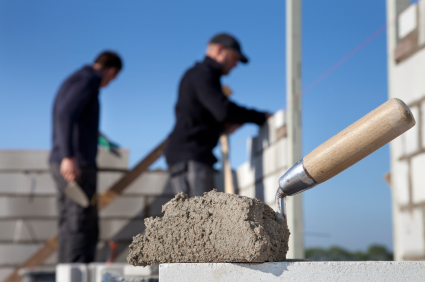Cement is made by carefully combining and heating select substances to trigger a chemical reaction. The cement material is then ground into a fine powder which can be mixed with other aggregates to create concrete for residential, commercial and industrial uses.
The first step in making cement is to quarry for rocks. Limestone, a type of sedimentary rock, is the main ingredient and main type of rock used to make cement. The limestone and any other types of rocks that will be used are quarried and collected and then ground up in giant rock crushers. According to the Portland Cement Association the initial crushing of the rocks used to make cement will result in rocks that are about 6 inches in size. These rocks then go to a secondary crusher or hammer mill to reduce them to about half of their size.
At this point in the cement making process the rock materials are proportioned and combined with other ingredients necessary for creating cement. Some companies use a wet process to make cement, which requires water to be added to the ground rock mixture. Other companies make cement with a dry method, so no water is used.
The mixture (whether wet or dry) is placed into a kiln. The kilns used to make cement are very large and heat the mixture to about 2,700 degrees Fahrenheit. During the heating process, chemical reactions occur and some ingredient components are gassed off. The result of the heating is a substance referred to by cement manufacturers as clinker. The clinker is roughly the size of marbles and is ground up to make cement. The most common type of cement, Portland cement, requires the addition of gypsum to the clinker before grinding.

